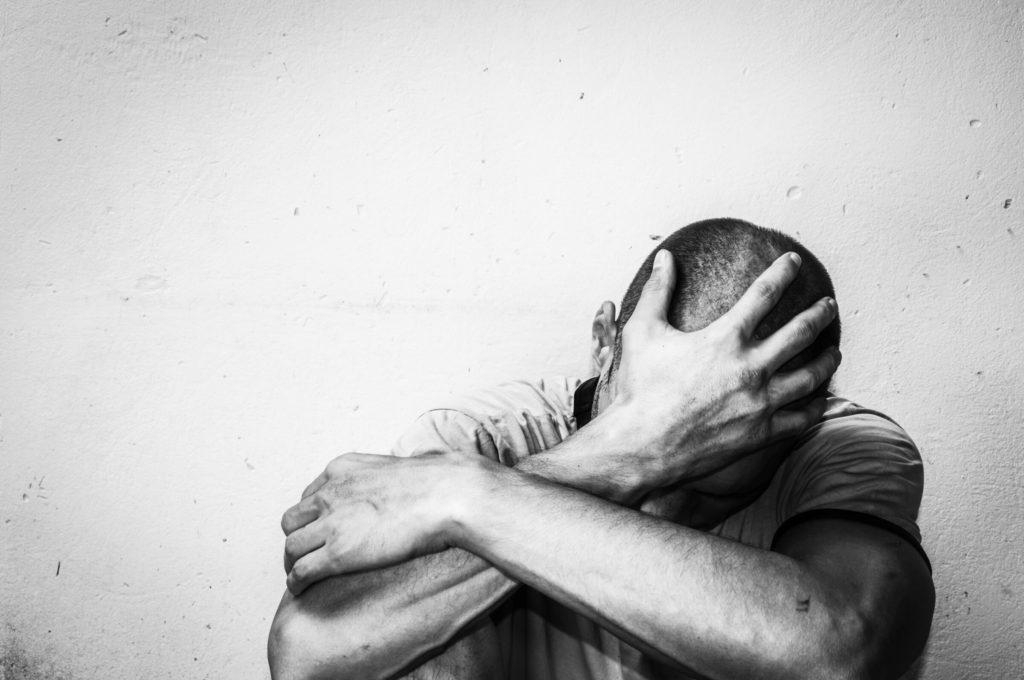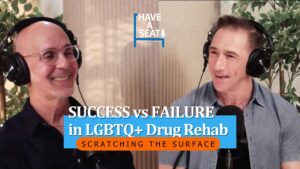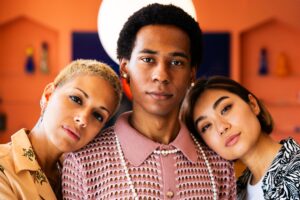Between 20-30% of LGBTQ people abuse substances. This statistic is shocking by itself, but it gets worse. Only about 9% of the general population reports substance abuse. A difference that big begs the question—why do LGBTQ people have a higher addiction risk?
LGBTQ Substance Abuse Statistics
Data from the 2018 National Survey on Drug Use and Health (NSDUH) suggests that sexual minority adults—in this study those who identify as lesbian, gay, or bisexual—have higher rates of substance abuse than heterosexuals.
Here are some findings from the study by drug type:
- 37.6% of sexual minority adults reported past-year marijuana use, compared to 16.2% of the overall adult population.
- 9% of sexual minority adults reported past-year opioid use (including misuse of prescription opioids or heroin), compared to 3.8% of the general population.
Another study on substance abuse in gay and bisexual men found that this group is 12.2 times more likely to use amphetamines than other males. Gay and bisexual men are also more likely to abuse methamphetamine than heterosexual men, a fact that’s troubling considering methamphetamine use has been linked to an increased risk of HIV transmission.
While the substance abuse rates amongst lesbians, gays, and bisexuals are concerning, they’re even worse for those who identify as transgender. One study found that more than 25% of trans people abused drugs and/or alcohol.
Given the high rates of SUDs in this population, the question is—why do LGBTQ people have a higher addiction risk?
Here are 4 reasons why.
4 Reasons Why LGBTQ People Have A Higher Addiction Risk
Before getting into the 4 reasons why LGBTQ people have a higher addiction risk, realize that substance use and addiction are complex topics. In addition, every individual with a substance use disorder is unique.
As such, no single reason can completely explain someone’s path to addiction. Rather, any number of factors could contribute to substance use. This article describes 4 of the most common factors underlying this phenomenon.
1. LGBTQ Individuals Experience Early Emotional Trauma
Whether it’s a young boy who loves experimenting with makeup, a transgender boy anxiously watching his breasts grow, or a bisexual girl feeling confused about her crushes, most LGBTQ people have a feeling there’s something different about them from a young age.
Having such complex feelings during childhood is a traumatic experience in and of itself. However, some of the most damaging early emotional trauma comes from external sources.
This could come from:
- Emotional or physical abuse
- Getting kicked out of the house
- Being a victim of bullying
- Being forced into conversion therapy
Various studies have confirmed the correlation between these experiences and increased substance abuse.
Experimenting with smoking, drinking, and drug use allows young LGBTQ people to dull or forget the pain of these experiences, even if just for a short time. In fact, The National LGBT Health Education Center states that “substance use among LGBT people is often a coping strategy for trauma-related symptoms and can be associated with poor self-care.”
2. LGBTQ People Have More Stressful Life Experiences
Unfortunately, the traumatic events LGBTQ people experience in childhood don’t end after they come out of the closet or move out of the family home. Rather, many LGBTQ people continue to experience stress throughout adulthood as a result of their sexual and/or gender identity.
This stress comes from many sources, with social prejudice and discrimination chief among them. Let’s take a closer look at each type.
Social prejudice
Anti-LGBTQ social prejudice stems from the belief that being LGBTQ is wrong or bad. As a result, people in this group are treated as lesser than because of who they love or how they express themselves.
Social prejudice can be subtle, for example, someone asking a lesbian couple which of the pair is the child’s “real” parent. Or, it can be more explicit, like two men enduring a barrage of anti-gay slurs just for holding hands in public.
This kind of prejudice can cause some LGBTQ people to avoid social settings or neighborhoods they deem dangerous. What’s more, feeling threatened when doing something as simple as walking down the street contributes to anxiety and fear. Such feelings can cause LGBTQ people to turn to substances as a way of managing negative feelings. Indeed, the link between anxiety and substance use is well documented in scientific studies.
Discrimination
Despite recent advances in LGBTQ rights LGBTQ people continue to experience discrimination from a variety of sources. In particular, they experience discrimination in public spaces, at school, and in the workplace.
Indeed, a 2020 study on the state of the LGBTQ community found 36% had experienced some form of discrimination in the last year. Among transgender respondents, the number rose to 62%. Experiences of discrimination take a toll on the psychological and physical well-being of LGBTQ people. It also impacts their as well as on their income and job opportunities.
As with other studies, this one documents the link between discrimination and substance use disorders in the LGBTQ population. It goes so far as to say the more discrimination a person experiences, the higher their risk of substance abuse.

3. Increased Prevalence of Depression in LGBTQ Populations
The Anxiety and Depression Association of America states that “somewhere between 30 and 60 percent of lesbians, gay men, bisexuals, or transgender people deal with anxiety and depression at some point in their lives. That rate is 1.5-to-2.5 times higher than that of their straight or gender-conforming counterparts.”
Various studies have made the connection between depression and substance abuse. For example, among individuals with a mood disorder (depression, bipolar disorder), 32% had a co-occurring substance use disorder. Amongst those living with lifetime major depression, 16.5% had an alcohol use disorder. Eighteen percent had a drug use disorder.
4. Party Lifestyle and Addiction Among LGBTQ People
Historically LGBTQ communities have been centered on activities like bars, clubs, and parties that involve drinking and drug use. Not so long ago, these were the only places where LGBTQ people could express themselves without fear of repercussions.
These days there are more opportunities for LGBTQ people to socialize. However, gay bars remain one of the most accessible safe spaces. Indeed, some scholars liken gay bars to churches. Both provide rituals, a sense of community, and a routine. Taken from this perspective, substance use in the LGBTQ community seems almost inevitable.
As if this weren’t enough, targeted marketing efforts by alcohol and tobacco companies exploit the connection between LGBTQ people and bars/clubs, using these locations as an easy place to push their products.
La Fuente Is A Leader In LGBTQ-Affirmative Addiction Treatment
While it’s true that LGBTQ people have a higher addiction risk, it’s not all bad news. We’re encouraged by recent legislation giving LGBTQ people the right to marry, openly serve in the armed forces, and go to work without fear of termination.
At the same time, we recognize the LGBTQ population needs more protections. Better legal and social protections for this community can help prevent the kinds of negative experiences that contribute to substance abuse.
Here at La Fuente Hollywood Treatment Center, we’re doing our part to improve the lives of those in our community by providing LGBTQ-affirmative addiction treatment.
LGBTQ-specific treatment leads to better treatment outcomes when compared to non-specialized programs. Specialized programs cater to the diverse needs of this population. In addition, they’re better positioned to address the unique reasons behind LGBTQ substance abuse.





